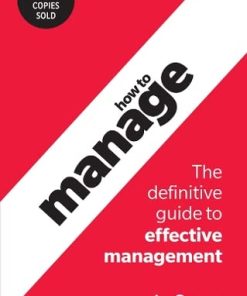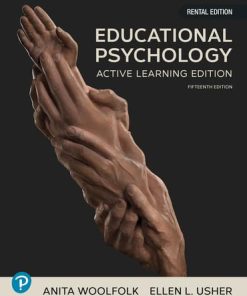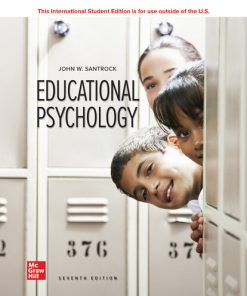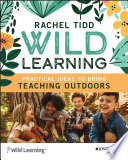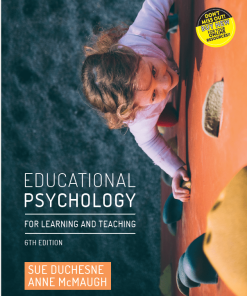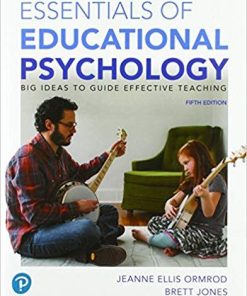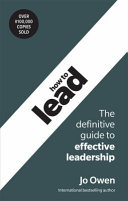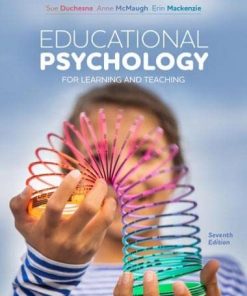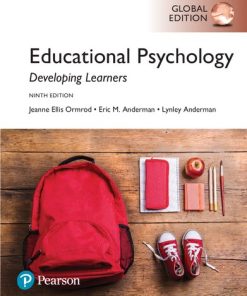(EBOOK PDF)Essentials of Educational Psychology Big Ideas To Guide Effective Teaching 6th Edition by Jeanne Ormrod, Brett Jones 9780136817666 0136817661 full chapters
$50.00 Original price was: $50.00.$25.00Current price is: $25.00.
Essentials of Educational Psychology Big Ideas To Guide Effective Teaching 6th Edition by Jeanne Ormrod, Brett Jones – Ebook PDF Instant Download/Delivery: 9780136817666, 0136817661
Full download Essentials of Educational Psychology Big Ideas To Guide Effective Teaching Pearson+ 6th Edition after payment
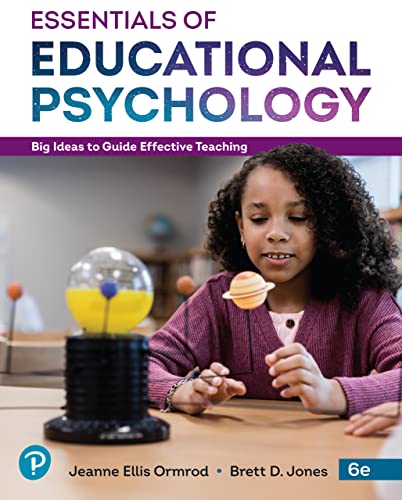
Product details:
• ISBN 10:0136817661
• ISBN 13:9780136817666
• Author:Jeanne Ormrod, Brett Jones
Essentials of Educational Psychology
Big Ideas To Guide Effective Teaching
Essentials of Educational Psychology focuses on the big ideas that impact teaching and learning in 10 concise, conversational chapters. It offers an overview of theories and research related to learning, development, motivation and assessment. Authentic classroom artifacts and realistic case studies provide real-world context of the principles in action. Exercises help you understand concepts by allowing you to examine your own learning experiences as a student. Clear guiding principles and research-based strategies show you how to apply the concepts as a teacher. The 6th Edition more seamlessly connects theories to principles, and principles to teaching strategies, better preparing you for your own classroom practice. Enhanced with new figures and references, it reflects current research and strategies.
Essentials of Educational Psychology Big Ideas To Guide Effective Teaching 6th Table of contents:
Contents
Essentials of Educational Psychology Big Ideas to Guide Effective Teaching
Chapter 1 Introduction to Educational Psychology
Big Ideas to Master in this Chapter
Chapter Outline
1.1 Developing Expertise as a Teacher
1.2 Using Research Findings to Make Instructional Decisions
1.3 Strategies for Learning and Studying Effectively
Summary
1.1 Developing Expertise as a Teacher
1.2 Using Research Findings to Make Instructional Decisions
1.3 Strategies for Learning and Studying Effectively
Case Study Practice Exercises
New Instructional App
Chapter 2 Learning, Cognition, and Memory
Big Ideas to Master in this Chapter
Chapter Outline
2.1 Thinking and Learning in the Brain
Functions of the Brain
The various parts of the brain work closely with one another.
Most learning probably involves changes in neurons, astrocytes, and their interconnections.
The brain functions in close collaboration with—rather than in relative isolation from—the rest of the body.
Knowing how the brain functions and develops tells us only so much about learning and instruction.
Teaching Strategies: Supporting Optimal Brain Functioning
Provide ongoing intellectual stimulation, but don’t overdo it.
Encourage physical exercise.
Encourage students to get plenty of sleep.
2.2 A Model of Human Memory
Sensory Register, Attention, and Working Memory
Sensory input stays in a raw form only briefly.
Attention is essential for most learning and memory.
Working memory has a short duration and limited capacity.
See For Yourself
A Divisive Situation
Teaching Strategies: Remembering the Limitations of Attention and Working Memory
Grab and hold students’ attention.
Keep the limited capacity of working memory in mind.
2.3 Long-Term Memory
The Nature of Long-Term Memory
Long-term memory is composed of declarative and procedural knowledge.
Long-term memory has a long duration and virtually limitless capacity.
Some declarative knowledge is stored as concepts.
Information in long-term memory is interconnected and organized to some extent.
See For Yourself
Horse
See For Yourself
Alejandro
See For Yourself
Coffeepots and Raccoons
Storing Information in Long-Term Memory
Some long-term memory storage processes are more effective than others.
See For Yourself
Retrieval Practice
See For Yourself
Letters and a Picture
See For Yourself
Twelve Words
See For Yourself
Five Chinese Words
Practice makes knowledge more automatic and durable.
Automaticity frees up working memory capacity for other tasks.
With age and experience, children acquire more effective learning strategies and use them more intentionally.
Teaching Strategies: Encouraging Effective Long-Term Memory Storage Processes
Help students learn concepts through the use of defining features, examples, and nonexamples.
Help students organize ideas by making connections among them.
Facilitate visual imagery.
Present questions and tasks that encourage elaboration.
Suggest mnemonics for hard-to-remember facts.
Focus assessments on meaningful learning rather than rote learning.
Provide many opportunities to practice important knowledge and skills.
Be on the lookout for students who have unusual difficulty with certain cognitive processes.
2.4 Learning as Active Construction
Knowledge Construction
Learners use what they already know and believe to help them make sense of new experiences.
See For Yourself
Rocky
See For Yourself
Three Pictures
Prior knowledge and beliefs affect new learning, usually for the better but sometimes for the worse.
Learners differ in the factors that influence their ability to learn and remember.
See For Yourself
The War of the Ghosts
Teaching Strategies: Helping Students Construct Knowledge
Relate new ideas to students’ prior knowledge and experiences.
Take advantage of students’ diverse background knowledge in designing instruction.
Provide experiences on which students can build.
Identify and address students’ misconceptions.
Regularly assess students’ understandings.
2.5 Why Learners May or May Not Remember What They Have Learned
Recalling Information
How easily something is recalled depends on how it was initially learned.
Remembering depends on the context and retrieval cues.
See For Yourself
The Great Lakes
How easily something is recalled and used depends on how often it has been recalled and used in the past.
Recall often involves construction or reconstruction.
See For Yourself
Missing Letters
Long-term memory isn’t necessarily forever.
Teaching Strategies: Facilitating Retrieval
Give students time to think about questions.
Give hints that help students recall or reconstruct what they’ve learned.
Provide opportunities for students to practice retrieving information.
Intermix practice problems with problems from previous lessons.
See For Yourself
Word Problems in Mathematics
Space review sessions over time.
Summary
2.1 Thinking and Learning in the Brain
2.2 A Model of Human Memory
2.3 Long-Term Memory
2.4 Learning as Active Construction
2.5 Why Learners May or May Not Remember What They Have Learned
Case Study Practice Exercises
Vision Unit
Chapter 3 Complex Cognitive Processes
Big Ideas to Master in this Chapter
Chapter Outline
3.1 Self-Regulation and Metacognition
Effective Self-Regulated Learning
See For Yourself
Self-Reflection About Self-Regulation
Self-regulating learners establish goals for their performance and plan their actions accordingly.
Self-regulating learners control and monitor their processes and progress during a learning task.
Self-regulating learners seek assistance and support when they need it.
Self-regulating learners monitor and try to control their motivation and emotions.
Self-regulating learners evaluate the final outcomes of their efforts.
Self-regulating learners self-impose consequences for their performance.
Most learners become increasingly self-regulating over the course of childhood and adolescence, partly as a result of maturation in key areas of the brain.
The Roles of Metacognition
Some effective study strategies are easily seen in learners’ behaviors.
Study strategies are effective only to the extent that they involve productive cognitive processes.
Metacognitive knowledge and skills gradually improve with age.
Learners’ beliefs about the nature of knowledge and learning influence their approaches to learning tasks.
See For Yourself
Beliefs About Knowledge
Teaching Strategies: Promoting Self-Regulation Skills and Metacognitive Development
Guide and support self-regulated learning and behavior.
Encourage metacognitive self-reflection.
Explicitly teach effective learning strategies.
Communicate that acquiring knowledge is a dynamic, ongoing process—that one never knows something completely.
3.2 Transfer
Factors that Affect Transfer
Meaningful learning and conceptual understanding increase the probability of transfer.
Both positive and negative transfer are more common when a new situation appears to be similar to a previous one.
Some knowledge and skills can be transferred to very different situations.
Learning strategies, general beliefs, and attitudes can also transfer to new situations.
Transfer increases when the learning environment encourages it.
Teaching Strategies: Fostering Transfer
Pursue topics in depth rather than superficially.
Provide numerous and varied opportunities to apply classroom subject matter to new situations and authentic activities.
Construct assessments that require students to apply their knowledge to new situations.
3.3 Problem Solving and Creativity
See For Yourself
Four Problems
General Principles Related to Problem Solving and Creativity
The depth of learners’ knowledge influences their ability to solve problems and think creatively.
Both convergent and divergent thinking are constrained by working memory capacity.
How learners represent a problem or situation influences their strategies and eventual success.
See For Yourself
Pigs and Chickens
See For Yourself
Candle Problem
Problem solving and creativity often involve heuristics that facilitate but don’t guarantee successful outcomes.
Effective problem solving and creativity require self-regulation and metacognition.
Teaching Strategies: Encouraging Problem Solving and Creativity
Create a classroom climate in which problem solving and creativity are both expected and valued.
Pose questions that require students to engage in divergent thinking.
Require students to work on complex problems, projects, and designs.
Use technology to simulate real-world tasks and problems.
Help students avoid mental sets when engaging in creative problem solving.
3.4 Thinking
Attributes of Critical Thinking
Critical thinking can take a variety of forms.
See For Yourself
Colds, Cars, Chance, and Cheer
Students can have difficulties engaging in critical thinking.
Critical thinking requires sophisticated epistemic beliefs.
Critical thinking is a disposition as much as a cognitive process.
Teaching Strategies: Developing Students’ Critical Thinking Skills
Encourage critical evaluation of information and ideas presented by others and in printed and online materials.
Support complex cognitive processes through group discussions and projects.
Teach complex thinking skills within the context of specific topics and content domains.
Summary
3.1 Self-Regulation and Metacognition
3.2 Transfer
3.3 Problem Solving and Creativity
3.4 Thinking
Case Study Practice Exercises
Interview with Charlie
Chapter 4 Learning in Context
Big Ideas to Master in this Chapter
Chapter Outline
4.1 Immediate Stimuli as Context
Stimuli and Consequences Influence Learners’ Behaviors and Cognition
Some stimuli tend to elicit certain kinds of responses.
Learners are more likely to acquire behaviors that lead to desired consequences.
Learners are also likely to acquire behaviors that help them avoid or escape unpleasant circumstances.
Learners tend to avoid behaviors that lead to unpleasant consequences.
Learners acquire many behaviors by observing other people’s actions.
See For Yourself
Five People
Learners learn what behaviors are acceptable and effective by observing what happens to people whom they perceive to be similar to themselves.
By seeing what happens to themselves and others, learners form expectations about the probable outcomes of various actions.
Teaching Strategies: Encouraging Productive Behaviors
Create conditions that elicit desired responses.
Make sure that productive behaviors are reinforced and that unproductive behaviors are not reinforced.
Make response–reinforcement contingencies clear and appropriate.
As an alternative to punishment, reinforce productive behaviors that are incompatible with unproductive ones.
See For Yourself
Asleep on Your Feet
Model desired behaviors.
Provide a variety of role models.
Shape complex behaviors gradually over time.
4.2 Social Interaction as Context
Other People Affect Students’ Learning
Learners sometimes co-construct new understandings with more experienced individuals.
Learners co-construct knowledge and understandings with peers.
Other people sometimes provide the support learners need to take on challenging new tasks.
Teaching Strategies: Providing Opportunities for Students to Learn from Others
Encourage student dialogue and collaboration.
Use computer technology to support both within-class and across-class communication.
Create a community of learners.
4.3 Culture and Society as Contexts
Culture as Context
Any cultural group encourages and models certain behaviors and actively discourages certain other behaviors.
Every culture passes along many cognitive tools that enhance learners’ thinking capabilities.
Every culture instills certain worldviews that color people’s interpretations of events.
See For Yourself
Considering the Big Picture
Every culture has certain ways of doing things, and these, too, are passed from generation to generation.
Inconsistencies between home and school cultures can interfere with school learning and performance.
Society as Context
Any large society has multiple layers that all affect children’s learning and development either directly or indirectly.
Different members of a society have different specialties, and they call on one another’s areas of expertise as needed.
In most situations, some society members have greater access to the society’s resources than other members do.
Teaching Strategies: Considering Students’ Broader Cultural and Societal Contexts
Remember that membership in a particular cultural or ethnic group is not an either–or situation but, instead, a more-or-less phenomenon.
Come to understand your own cultural lens and learn as much as you can about students’ cultural backgrounds.
Be aware of how your beliefs about race affect your behaviors and communications with students and others.
Incorporate the perspectives and traditions of many cultures into the curriculum.
Be sensitive to cultural differences in behaviors and beliefs and, when appropriate, adapt instructional methods to students’ accustomed ways of learning and behaving.
Be sensitive to the culture shock that recent immigrants might be experiencing.
Work hard to break down rigid stereotypes of particular cultural and ethnic groups.
Provide opportunities for students to interact regularly and productively with people from diverse cultural, ethnic, and racial groups.
Identify and, if possible, provide missing resources and experiences important for successful learning.
4.4 How Students Modify Their Environments
How Students Influence Their Environment
Learners alter their current environment through both their behaviors and such internal variables as beliefs, mental processes, feelings, and personality traits.
Learners actively seek out environments that are a good fit with their existing behaviors and internal variables.
Teaching Strategies: Attending to Students’ Behaviors
Help students become aware of how they are influencing their environment.
Be aware of how students’ behaviors affect your own thoughts and behaviors.
Summary
4.1 Immediate Stimuli as Context
4.2 Social Interaction as Context
4.3 Culture and Society as Contexts
4.4 How Students Modify Their Environments
Case Study Practice Exercises
Adam
Chapter 5 Motivation and Emotions
Big Ideas to Master in this Chapter
Chapter Outline
5.1 The Nature of Motivation
The Role of Motivation in Education
A variety of theories are often helpful in explaining students’ motivation.
Researchers have identified some general principles about students’ motivation.
See For Yourself
Reflecting on Your Beliefs About Motivation
Teacher Beliefs About and Assessment of Students’ Motivation
Teachers should believe that they can affect students’ motivation and that it’s important to motivate students.
Teachers can assess students’ motivation and engagement.
Teaching Strategies: Assessing Students’ Motivation and Engagement
Assess students’ motivation by observing their behaviors and reactions during class.
Assess students’ motivation by talking to them.
Assess students’ motivation by surveying them.
5.2 Internal Factors That Affect Learners’ Motivation and Engagement
Learners’ Psychological Needs
Learners have a basic need for arousal.
Learners want to be in control of their actions to some degree.
See For Yourself
Painting Between the Lines
Learners want to believe they are competent and have self-worth.
Learners want to feel connected to other people.
Learners’ Interests and Enjoyment
Learners have existing interests, but new interests can be triggered by the environment.
Learners experience greater enjoyment and interest in school activities when their psychological needs are met.
Learners can become immersed in an activity when the conditions are right.
See For Yourself
Enjoyable Activity
Learners’ Values and Goals
Learners are more likely to choose to devote time and effort to activities that they value.
Learners’ values are affected by their social and cultural environments.
Learners typically form goals related to their academic achievement; the specific nature of these goals influences learners’ cognitive processes and behaviors.
Learners must juggle their achievement goals with their many other goals.
Learners’ Self-Efficacy, Attributions, and Beliefs
Learners are more likely to choose activities and try harder at them when they believe that they can succeed at them.
See For Yourself
Self-Efficacy for Different Activities
When learners think their chances of success are slim, they may behave in ways that make success even less likely.
Learners identify what are, in their minds, the likely causes of their successes and failures.
See For Yourself
Carberry and Seville
Learners’ attributions for past successes and failures affect their emotional reactions and future performances.
Learners’ attributions are affected by their teachers’ attributions and resulting expectations for students’ performance.
Over time, learners acquire a general attributional style.
5.3 Teaching Strategies to Support Students’ Motivation and Engagement
Teaching Strategies That Empower Students
Give students control over some aspects of classroom life.
Communicate with students in a clear, but less-controlling manner.
Use extrinsic reinforcers when necessary but do so in ways that preserve students’ sense of autonomy.
Ask students to set some personal goals for learning and performance.
Teaching Strategies That Demonstrate the Usefulness of Activities
Explicitly relate class activities to students’ values, goals, and everyday lives.
Ask students to talk or write about how what they are learning is useful to their lives.
Create conditions that foster internalization of values essential for students’ long-term academic and professional success.
Teaching Strategies That Foster Perceptions of Success
Protect and enhance students’ self-efficacy and overall sense of competence and self-worth.
Present challenges that students can realistically accomplish.
Form and communicate optimistic expectations and attributions.
Minimize competition.
Focus students’ attention more on mastery goals than on performance goals.
Teaching Strategies That Stimulate Interest
Conduct interest-arousing lessons and activities.
Relate activities to students’ individual interests.
Teaching Strategies That Show and Promote Caring
Show students that you respect them and are concerned about their well-being.
Provide regular opportunities for students to interact productively with one another.
Create a classroom environment in which students respect one another.
5.4 Emotions and Their Effects on Motivation and Learning
The Role of Emotions in Student Motivation and Learning
Emotions and motivation are interrelated.
Emotions are closely tied to learning and cognition.
See For Yourself
Flying High
Productive emotions can trigger effective learning strategies.
Emotions can also trigger certain behaviors.
Some anxiety is helpful, but a lot is often a hindrance.
Teaching Strategies: Generating Productive Emotions for Learning
Get students emotionally involved in the subject matter.
Help students to better regulate their emotions.
Keep anxiety at a low to moderate level.
As students make the transition to middle school or high school, make an extra effort to minimize their anxiety and address their need for relatedness.
Summary
5.1 The Nature of Motivation
5.2 Internal Factors That Affect Learners’ Motivation and Engagement
5.3 Teaching Strategies to Support Students’ Motivation and Engagement
5.4 Emotions and Their Effects on Motivation and Learning
Case Study Practice Exercises
Praising Students’ Writing
Chapter 6 Cognitive Development
Big Ideas to Master in this Chapter
Chapter Outline
6.1 General Principles of Development
Developmental Principles
The brain continues to develop throughout childhood, adolescence, and adulthood.
The sequence of development is somewhat predictable.
Children develop at different rates.
Development is often marked by spurts and plateaus.
Development involves both quantitative and qualitative changes.
Heredity and environment interact in their effects on development.
Children’s own behaviors also influence their development.
Teaching Strategies: Accommodating Developmental Differences and Diversity
Ideally, teachers individualize instruction for every student.
Technology-based instructional strategies can be used to meet students’ developmental needs.
6.2 Developmental Processes
Knowledge Construction
Children have a natural tendency to organize their experiences.
Children are naturally inclined to make sense of and adapt to their environment.
Inconsistencies between existing understandings and new events promote development.
See For Yourself
Wooden Beads
Development builds on prior acquisitions.
Observations of the physical environment—and, ideally, frequent interactions with it—promote development.
Language development facilitates cognitive development.
Knowledge Construction Through Interaction with Others
Interactions with other people promote development.
Challenging tasks promote development.
Teaching Strategies: Facilitating Learners’ Knowledge Construction
Encourage play activities.
Scaffold students’ early efforts at challenging tasks and assignments.
Involve students in age-appropriate ways in adult activities.
6.3 Trends in Cognitive Development
Development of Working Memory, Knowledge, and Thinking Processes
Children’s growing working memory capacity enables them to handle increasingly complex cognitive tasks.
Children’s growing knowledge base enhances their ability to learn new things.
Children’s knowledge, beliefs, and thinking processes become increasingly integrated.
Stages of Cognitive Development
Thinking becomes increasingly logical during the elementary school years.
Thinking becomes increasingly abstract in the middle school and secondary school years.
See For Yourself
Beings and Basketballs
Several logical thinking processes important for mathematical and scientific reasoning improve considerably during adolescence.
See For Yourself
Pendulum Problem
Children can think more logically and abstractly about tasks and topics they know well.
True expertise comes only after many years of study and practice.
Teaching Strategies: Fostering Cognitive Development
Explore students’ reasoning with problem-solving tasks and probing questions.
Rely heavily on concrete objects and activities, especially in the early elementary grades.
Present abstract ideas more frequently in the middle school and high school grades, but tie them to concrete objects and events.
Initially introduce sophisticated reasoning processes within the context of familiar situations.
6.4 Intelligence
The Nature of Intelligence
Intelligence can be measured only imprecisely at best.
See For Yourself
Mock Intelligence Test
To some degree, intelligence reflects the general speed, efficiency, and control of cognitive processing.
Intelligence also involves numerous specific processes and abilities.
Learners may be more intelligent in some domains than in others.
Intelligence is a product of both inherited characteristics and environmental influences.
Intelligence may take different forms at different age levels.
Learners may have specific cognitive styles and dispositions that predispose them to think and act in more or less intelligent ways.
Learners act more intelligently when they have physical or social support for their efforts.
Teaching Strategies: Teaching with a Consideration of Intelligence
Interpret intelligence test results cautiously.
Look for signs of exceptional abilities and talents.
Consult with specialists if children show significant delays in development.
Be optimistic that with appropriate guidance and support, all students can perform more intelligently.
Be cautious in applying multiple intelligences theory and learning styles to teaching.
Summary
6.1 General Principles of Development
6.2 Developmental Processes
6.3 Trends in Cognitive Development
6.4 Intelligence
Case Study Practice Exercises
A Floating Stone
Chapter 7 Personal, Social, and Moral Development
Big Ideas to Master in this Chapter
Chapter Outline
7.1 Personal Development
Personality
Personality traits can be grouped into five general categories
Personality traits are influenced by genetic and environmental contexts
One personality trait, effortful control, doesn’t fully mature until adulthood
Parenting styles can affect children’s personality traits and behaviors
Cultural environments influence the development of personality traits
Sense of Self and Identity
Children construct increasingly multifaceted understandings of their sense of self over time
See For Yourself
Your Sense of Self
With age, self-perceptions become more realistic, abstract, and stable
As children reach puberty, they understand that they are unique individuals, but they may overestimate their uniqueness
Self-perceptions influence students’ behaviors, and vice versa
Other people’s behaviors affect students’ sense of self
Group memberships affect students’ sense of self and identity
Ethnic and racial identities also affect students’ sense of self and identity
Gender plays a role in students’ sense of self and identity
Sexual orientation influences one’s sense of self and identity
Despite the influence of others, growing children define and socialize themselves to a considerable degree
In forming their identity, it’s important for adolescents to explore alternative beliefs, values, and career goals
Teaching Strategies: Fostering Personal Development
Accommodate students’ diverse personality traits
Create a warm, supportive environment with clear standards for behavior and explanations of why some behaviors are unacceptable
Help students get a handle on who they are and who they want to become
Channel adolescents’ risk-taking tendencies into safe activities
Create a positive learning environment in which students of all gender identities and sexual orientation identities feel welcome
7.2 Social Development
Peer Relationships
Peer relationships promote personal, social, and academic development in ways that adult–child relationships often cannot
Peers help define “appropriate” ways of behaving
On average, boys and girls interact with their peers in distinctly different ways
Social groups become increasingly important in adolescence
Romantic relationships in adolescence can provide valuable practice for the intimate relationships of adulthood
Truly popular children have good social skills
Social Cognition
As children get older, they become increasingly aware of other people’s thoughts and feelings
Children’s cognitive processes in social situations influence their behaviors toward others
Aggressive behavior is often the result of counterproductive cognitive processes
Teaching Strategies: Encouraging Effective Social Cognition and Interpersonal Skills
Foster perspective taking and empathy
Talk with students about what it really means to be popular
Provide frequent opportunities for social interaction and cooperation
Explicitly teach social skills to students who have trouble interacting effectively with others
Explain what bullying is and why it cannot be tolerated
Be alert for incidents of bullying and other forms of aggression, and take appropriate actions with both the victims and the perpetrators
Explicitly discourage inappropriate electronic communications and postings
Promote understanding, communication, and interaction among diverse groups
7.3 Moral and Prosocial Development
The Nature of Moral and Prosocial Development
Children begin applying internal standards for behavior at a very early age
Children increasingly distinguish between moral and conventional transgressions
Children’s capacity to respond emotionally to other people’s misfortunes and distress increases throughout the school years
With age, reasoning about moral issues becomes increasingly abstract and flexible
See For Yourself
Martin’s Plight
Challenges to current moral perspectives can promote advancement toward more sophisticated reasoning
Cognition, affect, and motivation all influence moral and prosocial behavior
Moral values become an important part of some young people’s identity
Teaching Strategies: Promoting Moral Reasoning and Prosocial Behavior
Expose students to numerous models of moral and prosocial behavior
Engage students in discussions of social and moral issues
Discourage all forms of cheating
Get students actively involved in community service or service-learning experiences
7.4 Students Who Face Exceptional Personal or Social Challenges
Students At Risk for Academic Failure
Some students face, or have faced, exceptional challenges outside of school
Some students do well in school despite hardships
Teaching Strategies: Supporting Students Who Face Challenges
Intervene early and often with students who are at risk for dropping out of school
Connect students and families to resources
Identify additional supportive strategies and services for students who are homeless
Watch for signs of abuse
Be on the lookout for students who appear to be social outcasts
Provide extra support and guidance for students who have disabilities that affect their personal or social functioning
Know the warning signs of severe depression and possible suicide
Foster resilience in students
Summary
7.1 Personal Development
7.2 Social Development
7.3 Moral and Prosocial Development
7.4 Students Who Face Exceptional Personal or Social Challenges
Case Study Practice Exercises
The Scarlet Letter
Chapter 8 Instructional Strategies
Big Ideas to Master in this Chapter
Chapter Outline
8.1 Planning Instruction
8.2 Conducting Teacher-Directed Instruction
8.3 Conducting Student-Directed Instruction
8.4 General Instructional Strategies
Summary
8.1 Planning Instruction
8.2 Conducting Teacher-Directed Instruction
8.3 Conducting Student-Directed Instruction
8.4 General Instructional Strategies
Case Study Practice Exercises
Cooperative Learning Project
Chapter 9 Strategies for Creating Effective Classroom and School Environments
Big Ideas to Master in this Chapter
Chapter Outline
9.1 Creating an Environment Conducive to Learning
9.2 Expanding the Sense of Community Beyond the Classroom
9.3 Reducing Unproductive Behaviors
9.4 Addressing Aggression and Violence at School
Summary
9.1 Creating an Environment Conducive to Learning
9.2 Expanding the Sense of Community Beyond the Classroom
9.3 Reducing Unproductive Behaviors
9.4 Addressing Aggression and Violence at School
Case Study Practice Exercises
The Good Buddy
Chapter 10 Assessment Strategies
Big Ideas to Master in this Chapter
Chapter Outline
10.1 Using Assessments for Various Purposes
Guiding Instructional Decision Making
Diagnosing Learning and Performance Problems
Promoting Learning and Motivation
Assessments can influence students’ cognitive processes as they study
Assessment activities can be learning experiences in and of themselves
Assessments can provide feedback about learning progress
Assessments can motivate students to study and learn
Assessments can encourage engagement and self-regulation if students play an active role in the assessment process
Through both words and deeds, communicate that promoting learning and mastery—not passing judgment—is the ultimate goal
Determining What Students Have Learned at the End of Instruction
Evaluating the Quality of Instruction
10.2 Enhancing Learning Through Classroom Assessment Practices
10.3 Important Qualities of Good Assessment
10.4 Informally and Formally Assessing Students’ Progress and Achievements
Conducting Informal Assessments
Observe both verbal and nonverbal behaviors
Ask yourself whether your existing beliefs and expectations might be biasing your judgments
Keep a written record of your observations
Don’t take any single informal observation too seriously; instead, look for patterns over time
Designing and Giving Formal Assessments
Get as much information as possible within reasonable time limits
See For Yourself
Quick Quiz
When practical, use authentic tasks
Use paper-and-pencil assessment tasks when they are consistent with instructional goals
Use performance assessments when necessary to ensure validity
Define tasks clearly and give students some structure to guide their responses
Carefully scrutinize items and tasks for characteristics that might put some groups at an unfair disadvantage
See For Yourself
How Productive Will You Be?
When giving tests, encourage students to do their best, but don’t arouse a lot of anxiety
Minimize the potential negative effects of stereotype threat during testing
Establish conditions for the assessment that enable students to maximize their performance
Take reasonable steps to discourage cheating
Evaluating Students’ Performance on Formal Assessments
After students have completed an assessment, review evaluation criteria to be sure the criteria can adequately guide scoring
Be as objective as possible
Make note of any significant aspects of a student’s performance that predetermined scoring criteria don’t address
When determining overall scores, don’t compare students to one another unless there is a compelling reason to do so
Accompany any test scores with specific, constructive feedback
Make allowances for risk taking and the occasional “bad day.”
Respect students’ right to privacy
10.5 Summarizing Students’ Achievement with Grades and Portfolios
10.6 Assessing Students’ Achievement and Abilities with Standardized Tests
High-Stakes Tests and Accountability
Using Standardized Achievement Tests Judiciously
When you have a choice in the test you use, choose one that has high validity for your curriculum and students
Teach to the test if—but only if—it reflects important instructional goals
When preparing students for an upcoming standardized test, tell them what the test will be like and teach them good test-taking skills
When administering the test, follow the directions closely and report any unusual circumstances
Make appropriate accommodations for English learners
When interpreting test results, take students’ ages and developmental levels into account
If tests are being used to measure teacher or school effectiveness, advocate for a focus on students’ improvement over time rather than on age-group averages
Never use a single test score to make important decisions about students
Summary
10.1 Using Assessments for Various Purposes
10.2 Enhancing Learning Through Classroom Assessment Practices
10.3 Important Qualities of Good Assessment
10.4 Informally and Formally Assessing Students’ Progress and Achievements
10.5 Summarizing Students’ Achievement with Grades and Portfolios
10.6 Assessing Students’ Achievement and Abilities With Standardized Tests
Case Study Practice Exercises
Two Science Quizzes
Appendix A Describing Associations with Correlation Coefficients
Appendix B Understanding and Interpreting Standardized Test Results
Grade-Equivalent and Age-Equivalent Scores
Percentile Ranks
Standard Scores
Interpreting Computer-Generated Test Results: Two Examples
Helping Parents Understand Standardized Test Results
People also search for Essentials of Educational Psychology Big Ideas To Guide Effective Teaching 6th:
essentials of educational psychology
aggarwal jc essentials of educational psychology
essentials of educational psychology 6th edition
essentials of educational psychology 5th edition
essentials of educational psychology pdf free download
Tags:
Essentials of Educational,Guide Effective,Effective Teaching,Jeanne Ormrod, Brett Jones
You may also like…
Business & Economics - Management & Leadership
How to Manage: The Definitive Guide to Effective Management, 6th Edition Jo Owen
Education Studies & Teaching - Educational Theory
Education Studies & Teaching - Homeschooling
Uncategorized
Business & Economics - Management & Leadership
How to Lead: The definitive guide to effective leadership, 6th Edition Jo Owen
Education Studies & Teaching - School Education & Teaching



